
|

|
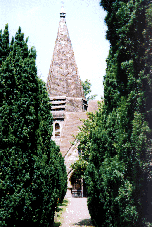 |
at Clewer, approximate date 1087 |
Clewer |
at St Andrews Church, Clewer |
This is the oldest building in the area, being a norman Church, and pre-dating Windsor Castle. A church was almost certainly on this site in Saxon times. A photograph of Clewer Church from Stovell Road, taken by T E Cochrane in c. 1909 is here, in a our Then and Now feature. A fuller account of St Andrews Church,
Clewer, its history and services are available at the |
|
Windsor Parish Church
|
Windsor Parish Church stands in the High Street near the Guildhall and is dedicated to St John the Baptist. The church was designed by Charles Hollis under the supervision of James Wyatt. A church has stood on this site since the 12thC. There is some carving by Grinling Gibbons and a painting, 'The Last Supper', which came from St George's Chapel where it formed the reredos in the reign of George III. More information about the Parish Church. |
Holy Trinity Parish &
Garrison Church
|
The foundation stone of Holy Trinity Church was laid by the Prince
Consort in 1842. [Contemporary
report of the laying of the foundation stone by Prince Albert]. Besides being a Parish Church,
the church is also a Garrison Church. The church contains memorials
to the Household Cavalry and Brigade
of Guards. Along the front of the gallery are the names of the
officers, non-commissioned officers and men of the Brigade of
Guards who fell in the Crimea. The text round ("Fight the
Good Fight ") was chosen by Queen Victoria specially for
the memorial. Against the wall under the gallery are the names
of those of the Household Cavalry Brigade of Guards who fell
in the South African War. The memorial was unveiled on January
28th, 1905, by King Edward VII. 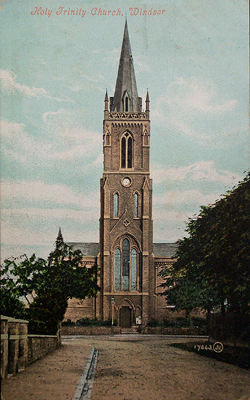 Although hand-tinted the colouring in this view may be quite accurate. Little has changed in the Valentine postcard view above, although the horse chestnut trees to the right are rather larger these days and there is a wall behind them which would have surrounded the playing fields of the Boys School which was to open in 1908. The school buildings later became Windsor Library. Around the 1900s Trinity Church was still surrounded by a wall topped by wrought iron railings and a gate, visible in the detail view below.
|
St Edwards Roman Catholic
Church
|
Alma Road, Windsor 1868
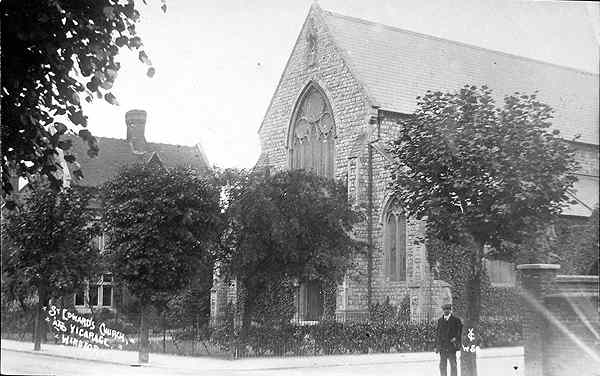
|
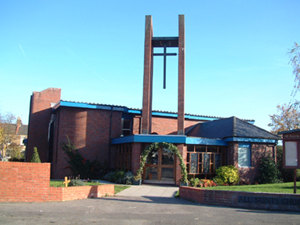 |
Following the death of Mary Sophia Tudor,
a member of the Thynne family, her family decided to build All
Saints Church in a field near their home as a private chapel
to commemorate her life. The red brick chapel was consecrated
in 1863. William Morris and his team produced the stained glass
windows that made All Saints an important stopping place for
visitors to Windsor. |
All Saints Church
|
|
Frances Road, Windsor |
|
In 1862 The Parish Church was proving too small. "It seats 1713" said Canon Ellison. "478 are for school children: families cannot get sufficient seatings" so the daughter Church of All Saints was planned. H.M. Queen Victoria expressed her approval and contributed £300, and her daughter Empress Frederick laid the foundation stone in 1863. 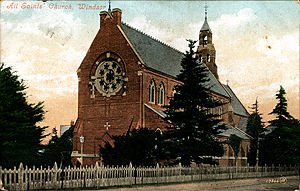
The present church dates from 1979 |